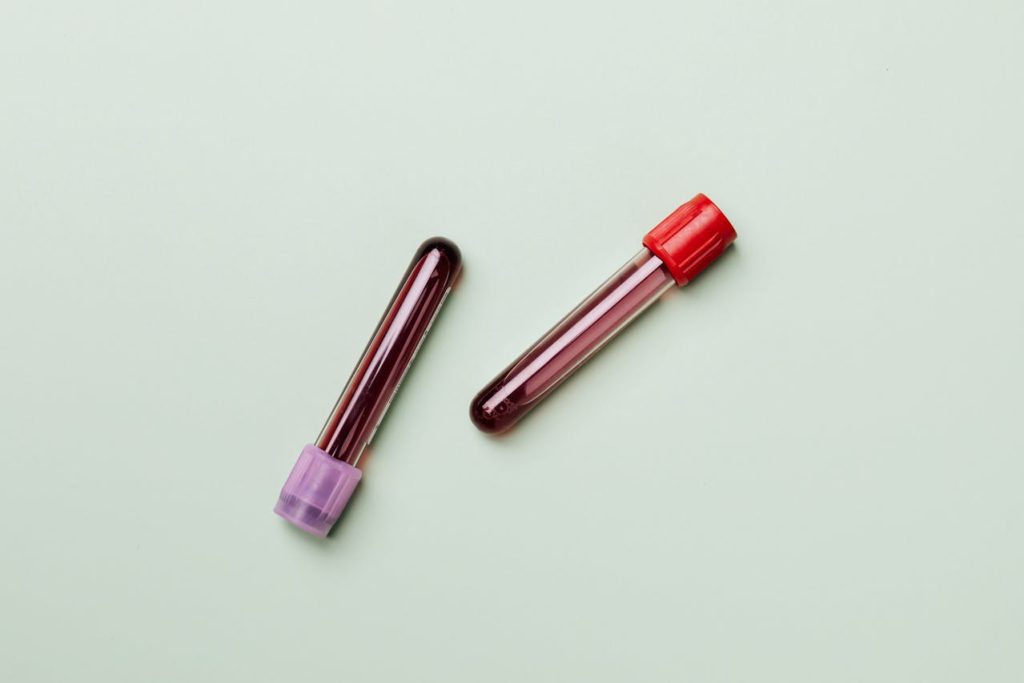Your cart is currently empty!
Patient Coughs up Blood Clot in the Exact Shape of the Lung Passage It Was Blocking

The human body has an uncanny way of surprising even the most seasoned physicians. In one extraordinary case documented by the New England Journal of Medicine, a patient expelled a six-inch blood clot that perfectly mirrored the branching structure of his lung’s airways. What looked like a delicate coral formation or the root of a miniature tree was, in reality, the fragile imprint of his respiratory system.
This rare event is more than a medical oddity. It shows how intricate and vulnerable the body truly is, where life and fragility often intersect in the most unexpected ways.
When the Lung Leaves Its Mark
In a case that startled even veteran physicians, a man in the intensive care unit for advanced heart failure produced something no one expected: a six-inch clot shaped like the very airways of his right lung.
To keep his weakened heart pumping, he had been connected to a ventricular assist device, a mechanical pump that sustains circulation. While lifesaving, these devices are notorious for creating turbulent blood flow that can encourage clot formation, even under careful anticoagulant therapy.
At first, the patient coughed up small clots, something his care team attributed to minor irritation and his blood-thinning medications. But after one particularly forceful coughing episode, he expelled a dense, folded mass of blood. Once carefully unfolded, the truth emerged: this was not just a clot, but a complete anatomical cast of his bronchial passages.
Every branch, from the larger bronchi to the finer sub-branches, was preserved in striking detail. Unlike mucus-based airway casts sometimes seen in plastic bronchitis, this one was composed almost entirely of coagulated blood. The rarity of its formation came down to a perfect storm of fragile lung vasculature, blood stasis, and unusually high cough pressure, all aligning in a moment few would ever witness.
The clinical team, astonished at the specimen’s clarity, chose to preserve it for teaching. One physician compared the cast to a coral structure, an eerie reminder of how illness can imprint itself so vividly upon the body.
When Lungs Create Sculptures of Themselves
Medical history occasionally presents cases that blur the line between biology and art. Bronchial tree casts are one such phenomenon, solid formations that replicate the intricate branching of the lung’s airways. While they can appear in different forms, those composed entirely of blood are exceptionally rare, and when expelled intact, they leave even experts astonished.
Under normal conditions, the bronchi and bronchioles are kept clear by airflow and the sweeping action of cilia. But when bleeding seeps into these air passages and remains undisturbed, it can clot into a mold of the airway tree. In patients with compromised lung clearance or serious heart and lung disease, these clots may harden, creating a three-dimensional imprint of the bronchial network.
Most casts fragment or block airways until removed. For one to be expelled whole requires a convergence of unlikely factors: the clot must be resilient enough not to break, the patient must generate tremendous cough pressure, and there must be a clear path for the structure to exit the lungs. The odds of this happening are vanishingly small, which is why reports are so rare in medical literature.
Clinicians classify casts as Type I (inflammatory, fibrin-rich) and Type II (acellular, mucin-predominant). The latter are not only rarer but carry higher risks, including airway obstruction, infection, and worsening heart-lung instability. Treatments vary from corticosteroids and bronchodilators to surgical removal, depending on severity.
This particular case is remarkable not only for the clot’s size and integrity but also for its setting: a cardiac ICU rather than a respiratory ward. It underscores how interconnected the heart and lungs are and how disease in one system can leave its mark on the other in ways both dangerous and visually haunting.
Why This Clot Was Unlike Any Other
Not all medical anomalies carry the same weight, and this case stood apart because of the extraordinary chain of circumstances that made it possible. Bronchial casts have appeared before in patients with respiratory infections or rare lymphatic conditions in children, but what unfolded here pushed the boundaries of clinical expectation.
The first point of astonishment was its scale and anatomical precision. At six inches long, the clot preserved the fragile branching of the right bronchial tree with such accuracy that physicians could trace its origin instantly. This level of structural fidelity suggested more than simple clotting. It required sustained conditions that allowed the cast to form, remain intact, and resist fragmentation over time, a scenario almost never encountered in cardiopulmonary medicine.
Just as striking was the context. This was not the result of a severe lung disease but of advanced heart failure. The combination of cardiac dysfunction, the turbulence from a mechanical heart pump, and ongoing anticoagulant therapy created an unusual set of forces that gave rise to a phenomenon more often associated with the lungs than the heart.

Finally, the case revealed the challenge of detecting complications in complex patients. Days earlier, the man had been coughing up smaller clots, symptoms that seemed consistent with his anticoagulation regimen. It wasn’t until the fully formed cast emerged that the magnitude of vascular leakage and respiratory compromise was fully understood. By that point, the patient’s condition had deteriorated, underscoring how swiftly such complications can escalate despite vigilant monitoring.
This rare clot was not just a cast but a silent narrative of how multiple systems, cardiac, vascular, and pulmonary intertwined in a way that defied medical expectation.
When Heart Machines Affect the Lungs
Cardiac support devices have transformed survival rates for patients with severe heart failure, but their impact does not stop at the heart. The case of the six-inch clot highlights an often-overlooked truth: mechanical heart pumps like the left ventricular assist device (LVAD) can set off a cascade of events that reach deep into the lungs.
How Turbulence Shapes Clots
LVADs keep blood circulating, but they do so in a way that disrupts the body’s natural flow. The turbulence they create fosters clot formation, particularly around the device’s connections. Computer models confirm this pattern, showing how regions of stasis and high shear stress activate pathways of thrombosis. In medical terms, it reflects parts of Virchow’s triad, injury to vessel walls and altered blood coagulability.
The Tightrope of Blood Thinners
To counteract these clotting risks, anticoagulant therapy is required. Yet keeping patients in the ideal therapeutic range is notoriously difficult. One study found that LVAD patients are within the target INR zone just 43 percent of the time. This narrow margin leaves them vulnerable to both clotting when under-medicated and bleeding when over-treated. Hemorrhagic complications, in fact, are among the most frequent issues, with up to 13 percent of patients experiencing serious bleeding within six months of implantation.
When the Lungs Pay the Price
The lungs often suffer as collateral damage. Pulmonary hemorrhage has been reported after LVAD placement, especially when fragile lung vessels collide with the demands of anticoagulation. Infections in the pleural space have also been noted, pointing to the broader strain these devices can place on respiratory health.
Shifting Pressures, Shifting Risks
Cardiac unloading is lifesaving, but it can unsettle the balance between the heart’s chambers. Rapid drops in left-ventricular pressure can strain the right ventricle via septal shift and increased preload, raising right-sided and pulmonary arterial pressures and reducing forward flow through the lungs. The result: higher risk of congestion and respiratory compromise.
What this case illustrates is not just a rare clot but a reminder of how tightly bound the heart and lungs truly are. Treating one without understanding its impact on the other risks leaving patients exposed to complications that transcend the boundaries of specialty care.
Everyday Steps to Keep Your Heart and Lungs Strong
Protecting your cardiopulmonary health is not about one big decision but the daily practices that strengthen both systems over time. Here are some essential habits:
- Nourish with Anti-Inflammatory Foods: A diet rich in vegetables, fruits, legumes, nuts, and fatty fish lowers systemic inflammation, a factor linked to both cardiovascular disease and lung damage. Omega-3 fatty acids play a particularly important role by supporting vessel health and regulating clotting, offering protection across both the heart and lungs.
- Steer Clear of Toxins: Smoking and environmental pollutants directly harm airway linings and blood vessels. Over time, this damage increases the risk of clot formation, lung scarring, and reduced oxygen exchange. Reducing exposure is one of the most impactful steps you can take for long-term cardiopulmonary health.
- Move with Intention: Moderate exercise such as brisk walking, yoga, or swimming enhances circulation, strengthens the diaphragm, and improves oxygen delivery throughout the body. For individuals with heart conditions, high-intensity workouts should be approached cautiously, with guidance from a physician.
- Track Silent Threats: Hypertension and diabetes often progress quietly, damaging small blood vessels in both the heart and lungs. Regular monitoring of blood pressure and blood sugar, combined with routine checkups, helps detect these issues early, when they are most manageable.
- Balance Fluids and Stress: Staying hydrated keeps blood flowing smoothly and supports the moisture of lung membranes. Stress management is equally important, as chronic stress can trigger irregular heart rhythms, constrict blood vessels, and cause shallow breathing that strains both systems.
- Listen to Your Body: Symptoms like fatigue, breathlessness, chest discomfort, or a lingering cough should never be ignored. These signs may indicate early stages of cardiopulmonary issues, and timely medical evaluation can prevent them from escalating into serious complications.
Strong heart and lung health is the outcome of steady, intentional habits, choices that create resilience one day at a time.

Lessons From the Unthinkable
What might look like a bizarre spectacle in medicine is, in truth, a powerful reminder of human fragility. Rather than a strange anomaly to marvel at, the six-inch clot in the shape of an airway tree stood as proof of the body pushed past its breaking point by illness.
Events like this, though exceedingly rare, provide physicians with valuable insight into how heart and lung systems break down under strain. They highlight the hidden connections between organs, showing how a mechanical heart device, anticoagulation therapy, and delicate pulmonary vessels can intersect in ways that reveal vulnerabilities we often take for granted.
For the rest of us, the takeaway is simpler. Caring for the heart and lungs cannot wait until crisis strikes. Their resilience depends on the choices we make every day—what we eat, how we move, how we manage stress, and how soon we seek medical attention when something feels wrong.
This extraordinary clot should not just astonish us. It should remind us that ordinary, consistent care is what protects the extraordinary systems we rely on to live.
